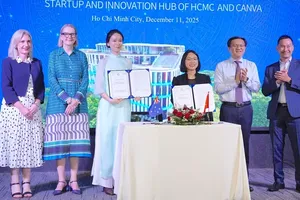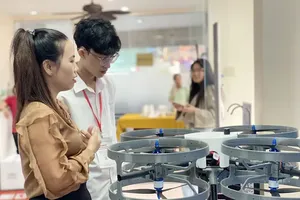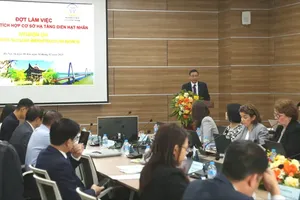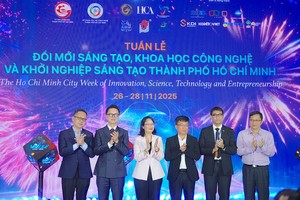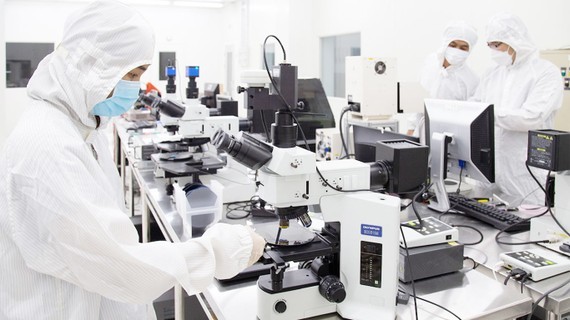
Statistics from Technavio reveal that the semiconductor market in Vietnam is estimated to increase by US$1.65 billion in the 2021-2025 period, with a Compound Annual Growth Rate (CAGR) of 6.52 percent per year. However, at present, the country still has to import all semiconductor microchips from foreign companies such as Broadcom, Hitachi, Qualcomm, Samsung, SK Hylix.
Deputy Director Nguyen Thien Nghia of the Authority of Information Technology and Communication Industry (under the Ministry of Information and Communications) informed that the growth speed of ICT in Vietnam is around 7-9 percent a year. In 2021, the total revenues reached $130 billion, $110 billion of which was from the hardware sector.
Sadly, up to 99 percent of electronic – telecommunications devices in use in the nation are imported. Understanding that, the country has already introduced policies to make way for the development of hi-tech products, including semiconductor chips. Yet for the past few years, the semiconductor industry still cannot identify a clear development pathway, and is in need of one such immediately.
ICT experts commented that Vietnam possesses an advantage of human resources thanks to its high population. It is also a nation receiving much investment from leading international corporations in the field. Nevertheless, for the semiconductor industry to properly develop, state leaders at all levels need a clearer vision and stronger determination.
In particular, Dr. Huynh Phu Minh Cuong from the Faculty of Electrical and Electronics Engineering of HCMC University of Technology (Vietnam National University – HCMC) said that it is necessary to establish a Vietnamese integrated circuit (IC) design company. This means a suitable training strategy to have high-level engineers as right now there is no such force in the country. In addition, policies must be introduced to offer capital support and specific mechanisms for the launch of research projects for IC, semiconductor microchips among universities, research institutes, startup businesses.
According to Nguyen Manh Hai, Head of the Viettel’s Research and Development Team, Vietnam should focus on the IC manufacturing industry by issuing long-term consistent policies to attract high-leveled human resources. Simultaneously, there should be more cooperation between the Government and major international companies in the field so that the IC manufacturing industry can be further developed, and the country can learn more from experience of its partners while buying cutting-edge machinery and equipment.
Saigon Hi-tech Park (SHTP) has lately opened its Chip Design Center (SCDC) and Chip Design Lab (SCDL). The former is a place to provide necessary designing software to universities and research institutes in need, to offer training sessions on IC design for lecturers in these places. The latter is an ideal location to deploy the content in cooperation agreements between SHTP and its partners specializing in IC design.
“SHTP is now concentrating on the designing stage, which has high added value in the whole semiconductor chip production process. In a long term, SHTP will pay more attention to IC technologies via its fablab to make a difference”, said Chairman of SHTP’s Management Board Nguyen Anh Thi.
Discussing the prospects of the microchip industry in Vietnam, particularly in HCMC, Prof. Dr. Dang Luong Mo, advisor to SHTP and an important figure for the establishment of the IC Design, Research and Training Center, believed that from the positive signals about the industry so far, he is able to see the real birth of the microchip industry in Vietnam with both the design and manufacturing sectors.


